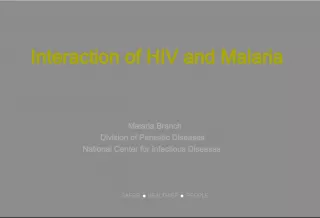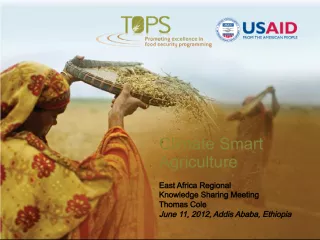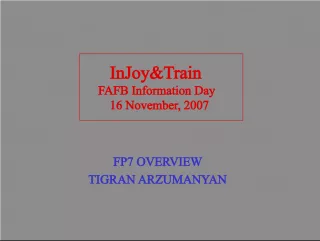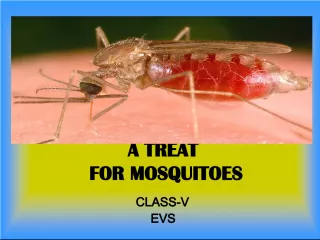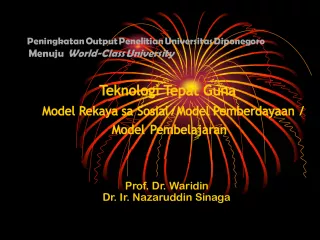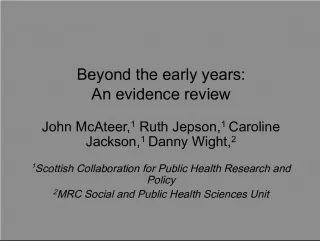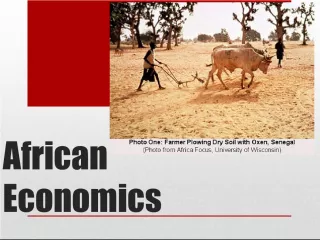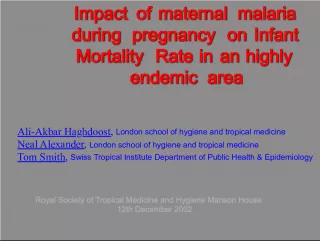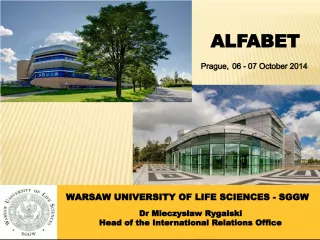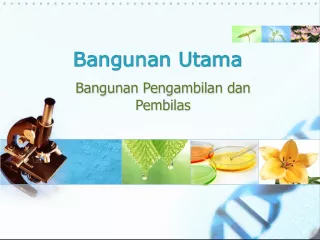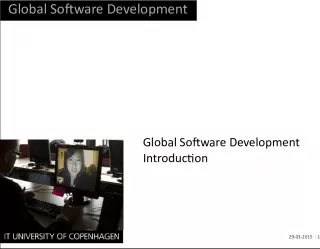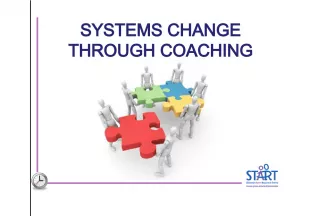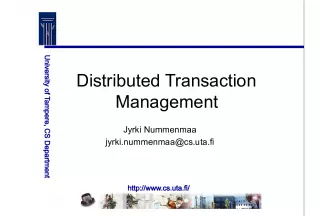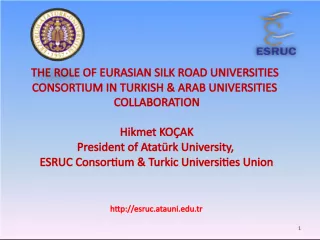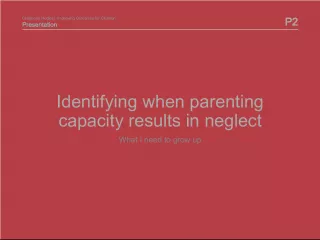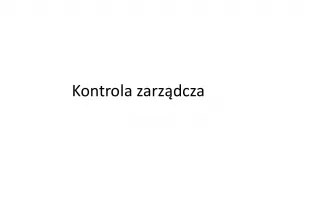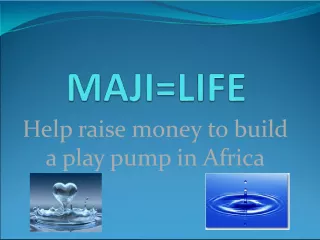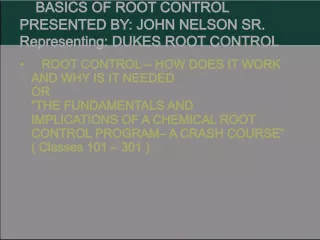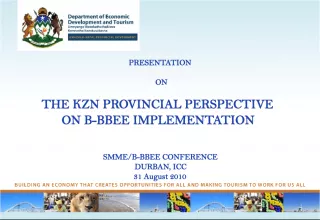Collaboration for Research Capacity and Malaria Control in Sub-Saharan Africa


The MRTC partnership aims to establish competitive research capacity in sub-Saharan Africa to support malaria control efforts. Led by Mahamadou A Thera, MD, MPH, this collaboration will pave the way for better malaria prevention and treatment strategies in the region.
- Uploaded on | 7 Views
-
 harold
harold
About Collaboration for Research Capacity and Malaria Control in Sub-Saharan Africa
PowerPoint presentation about 'Collaboration for Research Capacity and Malaria Control in Sub-Saharan Africa'. This presentation describes the topic on The MRTC partnership aims to establish competitive research capacity in sub-Saharan Africa to support malaria control efforts. Led by Mahamadou A Thera, MD, MPH, this collaboration will pave the way for better malaria prevention and treatment strategies in the region.. The key topics included in this slideshow are . Download this presentation absolutely free.
Presentation Transcript
1. Partnership to establish a Competitive Research Capacity in sub-Saharan Africa: MRTC as a support for malaria control Mahamadou A THERA, MD, MPH Ogobara K. Doumbo, MD, PhD Malaria Research and Training Center Department of Epidemiology of Parasitic Diseases Faculty of Medicine Pharmacy and Dentistry University of Bamako, Mali
2. A success story of Mali-NIAID/NIH Cooperation for Health Improvement in Mali since 1992 == the strategic vision
3. The National, Regional, and International Context = Creation of the MRTC Tropical parasitic diseases are still in the 21 st century important cause morbidity and DALYs in SSA: Malaria, Schistosomiasis, Filariasis, Geo-Helminths, with viruses and bacterial diseases such as HIV-Aids, Tb Current Tools for control are efficient for most of these diseases, but need to reach >=80% of the target population and access to clinical laboratories is and issue. They are not enough laboratory based diagnostic for case management: all fever cases during transmission season are diagnosed malaria = impact on patient health and family budget and risk of drug resistance (ACTs). More certified laboratories are needed at the national, regional and district level = best patient care, evidence-based decision and diseases burden estimation and evaluation of the Implementation of strategies = knowledge research = Health care system improvement Vaccines are the most efficient strategies in public health to reduce the burden of infectious diseases == capacity building in clinical trial in Africa == CLIA laboratory are key element for an ICH/FDA/WHO compliant trial. Good working and research environment will reduce African Researchers and health workers brain drain : == Creation the enabling environment!
4. Malaria = 3 tsunami Malaria = 3 tsunami En Afrique par an En Afrique par an > 1,000,000 Dcs > 1,000,000 Dcs
5. NIH Extramural: NIAID/ DMID/ FIC MRTC/DEAP/FMPOS WRAIR CDC USAID Government of Mali/Uni-Bko/MOH Grants: BioMalPar MalariaGEN EDCTP CVD Maryland AUF AMANET Universities: Marseille, Angers, Bordeaux, Lyon, Paris, Oxford, Stokholm, Nijmegen, Tulane, Dakar, Ouagadougou, Abidjan, Conakry, Cotonou, Libreville AIEA Institut Pasteur FIC/NIH Pharma: Bio-Merieux, Sanofi-Aventis, GSK, Dafra, Pfizer, Mepha, Novartis MIM/TDR/WHO Intramural : MVDB, LMVR MMV-MVI MMV-MVI
6. Professeur Philippe R anque Pr C. Soucko F0.1 Professeur ENSUP Pr A. Diallo Vice Recteur Univ. Bko Pr Y.T. Tour OMS- Geneva Pr A.Tounkara Doyen FMPOS Pr O.K. Doumbo Directeur MRTC F1.1 A. Dolo O. Koita A. Djimde S. Doumbia M. Diallo M. Thra A. Tour S. Diop F. Traor S. Sow B. Traor F1.2 F2.3 F2.4 F2.5 En formation Mali, Afrique, Europe, USA. A. Dicko O.B Tour I. Sagara M. Diakit B.Poudiougou M S Sissoko K. Kayentao O. Thiero L Sangar A. Bea Prof ag. Der FMPOS Directeur LBMA Chef Unit MEDRU Chef Unit GIS/RS Chef Unit Diag.Parat. Chef Unit MVU/BMP Expert OMS Chef Unit Anthro/Serefo Directeur CVD-Mali Directrice Phar-Priv Chef Unit PREMA Chef Unit Epi/Biosta/ Data Chef Unit BioInformatic Sc Doctorant Tulane, USA Chef Unit Genomiq PI -essai Vaccin Sotuba PI -essai Vaccin Bancoumana Expert Millienium Village PI - Prema Kambila / Sikasso Biostatics Der SP FMPOS Chercheur LBMA Chercheur MEDRU
7. A. Djimd, PharmD, PhD Chef dUnit MEDRU O. Traor S. Doumbo M. Tekt B. Fofana D. Ouologuem S. Dama C. Ndong M. Diakit M. Wele A. Bea D. Ouologuem O. Maiga PharmD 1999 Ministre Sant MD, 1999 Assistante Recherche PREMA F1. F1.1 F1.2 PharmD, 2001 Assistant Recherche MD, 2002 Formation Msc Tanzanie PharmD, 2004 Formation PhD USA PharmD, 2005 Assistant Recherche DPhil, 2007 Uk, Oxford Chef Unit Gnenomique PharmD 2007 Ministre Sant Gabon A.Bea A. Kone DEA, 2003 Formation PhD France DEA, 2006 Formation PhD Karolinska Institute Suede A. Kon Formation PhD, ISFRA, Universit Bamako Formation PhD , Universit Lyon I France Formation PhD, Universit Pennsylvanie, USA Formation PhD , Universit Paris V, France Formation PhD Karolinska Institute Suede F1.3 A. Dara H. Niangaly A. Togo A. Kodio N. Diallo Pharm 8 FMPOS Pharm 7 FMPOS Med 8 FMPOS Med 8 FMPOS Med 7 FMPOS Internes
8. Experienced Staff (>50) MD/PharmD + PhD MD/PharmD + PhD candidates PhD PhD candidates MD/PharmD + Master degree MD/PharmD + Master candidates Master MD candidates and PharmD candidates Project managers, drivers, lab technicians
9. Bandiagara Dongubougou Sotuba Bancoumana Bougoula Hameau Kangaba/Kela
10. IMPACT SUR LA QUALITE DES SERVICES DE SANTE AU MALI: Normes ICH/FDA
11. IMPORTANCE DE LA CAPACIT DE FORMATION CONTINUE DES QUIPES Workshop on Data Management, From 11 African countries.
12. Wide Area Network Description Bamako Bamako Niono Satellite link Bandiagara Mopti Satellite Packet Radio NIH Hub SITE Sikasso Sotuba Donguebougou Bancoumana Banambani Koro 300 km 350 km 670 km 60 km 600 km 25 km 32 km 75 km 128 kbps 64 kbps 128 kbps
13. Major scientific contributions of the MRTC/DEAP, Mali From 1992-2008 MRTC staff published with their international collaborators > 240 peer review papers: NATURE Science PNAS LANCET BLOOD JID AJTMH Imm. Infect NEJM PLoS
14. Current collaborative clinical research on Malaria Malaria Vaccines Development Molecular biology of parasites Immunology & Immunogenetics Biostatistics and Data Management Vectors Ecology and Biology GIS/RS related to malaria transmission Epidemiology and malaria Risk factors Drug Resistance and GRI Model for drug policies Human Genetic and Protection against Malaria
15. TPIp with SP: Kayentao et al., JID, 2005 (MRTC-CDC/NIAID grant) Semaine de gestation Conception Naissance 20 30 10 Dose 1 16 sem Dose 2 Avant 38 sem Mouvement
16. Mutation Sites in the PfCRT Transmembrane Protein K76 N75 M74 C72 H97 A220 N326 Q271 R371 I356
17. Molecular Diagnosis of Chloroquine Resistance in the Field
18. Kolle Bandiagara
19. Banamba Tombola NDebougou Koulikoroba Sirakoro- Meguetana Sikorol Markacoungo Dimbal Kolbougou Toguel Nina Kafana MPessoba Tambacara Doily Segue Sincina Gakoura Cinsa na Map of CQR per GRI Model
20. Efficacy of ACTs in Mali
21. New Treatment Policy First line AS/AQ or AR-L Severe and complicated: Quinine RDTs validation for early case management
22. Improvement of case management Bandiagara In 1994, Traditional Healers (TT) were the main care providers for severe malaria Approach based on respect Maintain the principal link with community and keeping the TT influence We also establish good capacity for diagnosis: Improved microscopy Available drugs for severe malarial illness treatment Qualified staff
23. As a result of case management improvement in different study sites: Reduction in incidence of severe malaria of more than 50% Significant reduction in overall childhood mortality and dramatic reduction of malaria specific mortality Strategies validated for the National Malaria Control Program and scaled up implementation of early case management
24. Parasite Prevalence and Spleen rate in Bancoumana from 1996-2001
25. Clinical Malaria cases in 2006 Uncomplicated malaria cases: 2,321 Severe malaria cases: 55
26. Malaria Vaccine Studies in Mali (n=10), PLoS, 2005, 2006, 2007, 2008 2003-2004, FMP1 trial in Bandiagara, Phase I FMP1/ AS02A vs. Rabies vaccines Aim to assess safety and immunogenicity 2004-2005, AMA1 trial in Doneguebougou, Phase I AMA1-C1/Alhydrogel vs. Recombivax HB Hepatitis B vaccine Aim to assess safety and immunogenicity 2004-2005, FMP2.1 trial in Bandiagara, Phase I FMP2/ AS02A vs. Rabies vaccines Aim to assess safety and immunogenicity 2006-2008 AMA1: PHASE 2, BANDIAGARA + BANCOUMANA AMA1+GpG, PHASE 1, ADULTS AND CHILDREN, DONEGUEBOUGOU. MSP3 PHASE 2 SOTUBA
27. Takala et. al PLoS Medicine 2007 100 children followed 3y MSP-1 19 genotyped by Pyrosequencing Haplotype estimation model 18 haplotypes among 1,369 infections Frequency distribution similar over time, season, age groups Suggests balancing selection 3D7 vaccine strain prevalence: 16% Explains lack of efficacy in Kenya? FVO = better vaccine target? Dynamics of MSP-1 19 haplotypes in Mali
28. Implications for Malaria Vaccine Design, Efficacy and Testing Interpretation of vaccine efficacy in the context of parasite allele frequencies Need to know frequency of vaccine target alleles Allele-specific immunity elicited by a vaccine targeting a minor allele could result in low overall efficacy that masks high allele- specific efficacy Power/sample size to detect allele-specific efficacy vs. overall efficacy Identify diversity most relevant to cross-protection 25 haplotypesbased on cluster c1L 10 highest frequency c1L haplotypes account for 81% of infections 3D7=13.8% and FVO=5.6%
29. Single point mutation 6: Glu Lys Originated and restricted to West Africa Usually asymptomatic HbC provides 80% protection against cerebral malaria What are the mechanisms? Lesson from Mother Nature : The HbC Story in Dogon, Mali Lesson from Mother Nature : The HbC Story in Dogon, Mali
30. HbC protects Dogon from severe malaria Agarwal et al ., Blood 96 :2358 (2000) No. AA AC CC AS Reported 3,473 81% 15% 1% 3% Non-severe 391 80% 16% 1.5% 2.6% Severe 67 91% 4.5%* 0 4.5% Odds Ratios 0.22 1.91
31. Rosetting and ABO blood groups in Mali case- control study : N 51 12 66 76 Median 15% 20% 12% 3% P=0.003 IQR 2-26 0-59 1-22 0-15 Kruskal Wallis test Rowe et al. PNAS 2007
32. Future Common Plateform at the ICER: Affymetrix GeneChip System
33. Long term vision Efficacious and safe malaria vaccine , integrated in EPI Population where the vaccines are being tested to be among the first beneficiaries of vaccine (Ethical requirement) Reduce the burden of malaria in Africa and in the World Pathophysiology to develop more effective controls tools learning from Nature Common usage of resources: high throughput technologies; NTIC, field sites etc
34. Strengths of MRTC/DEAP, Mali (1) Political/Social Environment: democracy in Mali since 1991 Strong Support from the Malian Government Partnerships: Mutual trust, respect Rigorous selection procedure for trainees = Staff with clinical research experience: F1/F2/F3 generation of researchers trained in France, USA, UK, Italy, Canada and now back at the MRTC Large pull of juniors scientists devoted to clinical research F4/F5 generations under training Internet connection through Satellite Lab Space and Equipments and Tech.Transfert Well equipped and functional field sites (5)
35. Strengths of MRTC/DEAP, Mali (2) Capacity to compete for international grants with foreign collaborators Capacity of the staff to write science and publish Senior trainees start to become leaders in specific field of research and are building their own unit = building leadership capacity MRTC/DEAP was selected in 2003 both by AUF and NIAID/NIH as a regional and international center of excellence on clinical research/Malaria == more funds, support and collaborations. EDCTP- BIOMALPAR MALARIAGEN
36. Strengths of MRTC/DEAP, Mali (3) In situ Doctoral Training: DEA, PhD with ISFRA at the University of Bamako, Mali, Over sea's training: MSc, PhD : France, UK, Canada, USA. Regional training: Dakar, Abidjan, Ouagadougou, Tanzania (MSc in Clinical Studies). Short terms training, workshops . E-learning capacities +++
37. Opportunities for MRTC/DEAP, Mali NIH, EU, AUF and Other Partners commitment to support Strong link with northern competitive scientific groups: EU, USA and southern groups in Africa Building managerial capacities: Mali Service Center Others research groups at the FMPOS: HIV/AIDS/TB, at the FAST and MOH, CVD Mali. Government Policy to Strengthen Research
38. Acknowledgements Government of Mali NIAID/NIH, long term support CVD-Maryland, USA MIM/TDR WAIR/GSK USAID AUF EDCTP Foundations: Mrieux, Pathfinder, Asturias Studies sites population (Bandiagara, Doneguebougou, Bancoumana, Sikasso)
